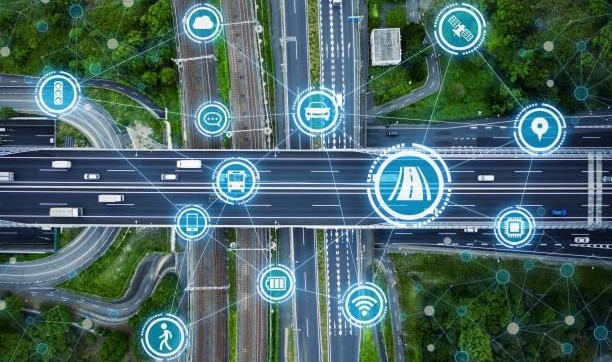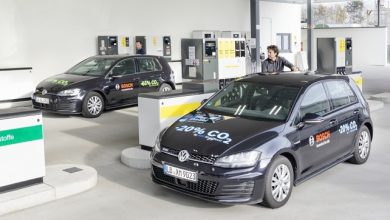Artificial Intelligence in Automotive – Fleet & Passenger Safety

Artificial Intelligence is a commonly used buzzword in the technological industry, it has also been held as a game-changer in many industries. Some experts even go as far as to claim it will soon replace humans, very few really understand the true meaning of the term, and how it can be used to improve our day-to-day lives and our business. To simply put, AI is building up deep machine learning capabilities that mimic cognitive functions associated with the human mind, such as learning and problem-solving.
Since the beginning of the twentieth century, artificial intelligence has acted as the main anchor and driver of emerging technologies like big data, robotics, and IoT, and continues to play a technological innovator for the future. It also has a profound impact on the automotive industry.
Some of its advanced technology has benefited fleet management. Fleet operators, such as OEMs, telematics companies, car-sharing companies, and enterprises with large fleets, have the most to gain from advanced analysis of the data collected from the vehicles in their fleet. These companies use smart devices such as sensors and actuators to capture huge amounts of data to compute them and show results on a real-time basis. This data can include anything from location, speed, distance, fuel consumption, driving behaviors, and even doors left open, all of which can be used not only to improve management but also to eradicate vehicle misuse by drivers.
The major challenges standing in the way of fleet operators are to increase control and efficiency out of such large amounts of data generated, and the various formats in which they are provided. Operators lack the knowledge and time to scrutinize the terabytes of information passing through their legacy system each day. The solution is created by combining the collected information with novel machine learning techniques and advanced big data analytics, through which operators will receive a coherent view of their fleet, be able to monitor and manage them adeptly, easily detect issues, and enforce their fleet’s policies.
Artificial Intelligence has also helped improve many other aspects of fleet management and maintenance, from reducing unplanned downtime to increasing efficiency throughout timely maintenance, repair processes, and improving fuel economy. Machine learning and AI can provide fleet operators with critical data that can be used to optimize operations, as well as predictive analytics to enable better decision-making in the future based on the analysis of past fleet activities.
Apparently, the use of artificial intelligence has not been restricted alone on tracking fleet performance alone but it has also expanded its reach on addressing more critical issues faced by fleet operators such as safety and security. When it comes to safety it usually encompasses challenges pertaining to the driver, vehicle, material or goods, and passenger safety.
While driving effective road safety solutions, artificial intelligence has the potential to make driving safer, by utilizing methods that can be used to learn from the various driving conditions on Indian roads, climate conditions and offering challenging opportunities in the scope of automated systems with an aim to aid drivers. Simple safety technologies have evolved, becoming smarter and producing more accurate, meaningful data for drivers and fleet managers. From collision warnings to vehicle tracking, AI is used to keep those inside and outside the vehicle safe. In-built collision avoidance technology has become a standard in most cars manufactured today.
Cars equipped with sensors and/or cameras assist drivers with a variety of safety solutions ranging from departure warnings to pedestrian and animal detection. Although the use of sensors and cameras isn’t standardized in the commercial vehicle industry, the adoption rates continue to increase as the benefits of these investments prove effective. Fleet owners and managers see the value of adding driver assistance technology to increase awareness around the vehicle.
AI On Board
AI technologies can recognize obstacles, multiple objects, and hazards from a safe distance and send real-time alerts to the driver, all this happens within a fraction of a second. It also addresses the issue of safety through the advanced driver assistance system (ADAS). These advanced driver assistance systems also include high-definition cameras and onboard sensors that are currently used to capture the driving environment outside the vehicle as well as inside the vehicle; using framed images from cameras constantly to monitor the driver for drowsiness, and fatigue conditions.
This information is analyzed in real-time with Deep Learning algorithms and powerful integrated processors. Such a driver drowsiness detection solution has an artificial intelligence tool that detects whether the driver is falling asleep during his drive, and will be able to alert the driver to make a stop to rest. Technology has enabled it to detect incidents of concern or unsafe events to be analyzed and sent to the fleet owners along with the relevant video and sensor information including intelligent detection of events such as traffic light violation, sign violations, relative speeding, and detections of hard acceleration, hard turns and hard braking.
Artificial intelligence is also helping enable customer experience through infotainment systems within cars. AIs in-cab alerts can get instant feedback on their driving behaviors, prompting immediate self-correction. Unsafe driving behaviors include things like using a handheld device, speeding, cornering, and not wearing a seat belt. Users are now able to connect their personal devices to their cars which helps them enable features such as understanding when fuel is about to end. AI uses this connection to communicate with the driver and alert them of the low fuel, as well as show available options for nearby fuel stations.
Driver incentive programs are one of the best ways to raise overall fleet safety and performance that motivates drivers to push themselves to be better, improve ranking, and be more aware of what they are doing every day in their vehicles. New technologies powered by artificial intelligence (AI), help fleets understand and coach drivers in real-time while maintaining driver privacy. With this new breed of intelligent driver safety systems, fleets can become safer and smarter by using a data-driven approach.
AI in Vehicle Maintenance
AI has also been adopted in the automotive service industry to different degrees. Some of the major applications of AI being used by companies are through Predictive Maintenance. Predictive maintenance lets you monitor the vehicle’s health to avoid future failures during operation. It uses predictive algorithms with data from vehicle sensors to estimate when your vehicle will fail.
Vehicle manufacturers have hundreds of sensors, cameras, and instruments to monitor every aspect of the vehicle and provide feedback to the vehicle computer. The vehicle computer processes this information and uses it to intelligently predict the problem that may arise. These help vehicle owners and their mechanics replace parts and address various issues fast before they add up into much bigger problems.
Transport companies with large fleets of vehicles leverage the presence of these sensors by using advanced technology that links their vehicle ICUs to the internet to conduct a remote diagnosis. AI makes this possible thus helping the company avoid vehicle breakdowns when their fleets are on the road. This saves the companies both money and time as they are able to predict problems and solve them on time even if their vehicles are far off on the roads. While wear and tear will always occur, accidents can be prevented. The is why many vehicle manufacturers are currently developing several AI and machine learning-based technologies to help prevent accidents.
AI for Public Safety
Covid-19 has also undoubtedly transformed the way people work, travel around with serious implications that can be seen within the public and private transportation sector as well. The pandemic has changed the way in which people are commuting now. With people’s safety in mind, the public and private transport operators need to revamp their operational procedures to prioritize commuter safety and gaining their trust. Safety measures such as sanitization, proper implementation of social distancing are a must now.
Applications of Artificial Intelligence, the Internet of Things, and Intelligent Transportation System can tackle many such problems of the transportation system. It can also help to reduce human-to-human transmission and prevent cluster outbreaks in public and private transportation systems by monitoring adherence to COVID-specific norms and SOPs while improving efficiency and ease of monitoring.
Some solutions like camera-based AI modules can monitor transport infrastructure to detect adherence to wearing Masks and Social Distancing norms. These AI systems powered by sophisticated neural networks can also detect instances of crowd formation and generate alerts. Innovative solutions like thermal temperature screening, face mask detection of passengers before boarding a ride would also ensure utmost safety procedures followed.
Combining thermal imaging with video analytics and Al techniques provides a robust system to identify individuals, their body temperature, and whether they are wearing masks. To enhance fever detection, facial and skin temperature data are sent to Al models which track temperature information and any anomaly with historical data is flagged. This system could be integrated within public and private transportation systems for contact tracing, to accelerate tracking speed, locate exposed individuals and quickly contain the spread of infection.
With advances in high-performance computing and big data, companies will be able to utilize simulations in real-time to solve crowding problems. It is not just for crowding incidents but this system can be utilized for improving response times during all types of incidents, tracking failures, signaling systems issues. Investments in such systems not only address the current needs for infection containment or incident management but will also create new services, experiences and add value.
Using machine learning and big data analytics will help generate meaningful insights, and can automatically highlight important safety features, safety alerts, and risky driving behaviors instead of laboriously going over endless columns of information to generate meaningful insights.
AI is not the only technological solution for all problems, but when accompanied by fewer changes in infrastructure and process changes, it can be transformational for many industries, including transportation.
Author:

Vikram Puri
CEO
Transworld Technologies Ltd
Vikram Puri is an inventor, technocrat and Rotarian. He is the Group CEO and Director of the Rs. 500 Crore POSHS Group, with investments in the Automotive, Infrastructure and Technology.
Also the CEO of Transworld Technologies Ltd., a Wireless Internet of Things company, Vikram designs and builds edge computing systems and Cloud Big Data. Their embedded wireless device, the Mobile Eye, won the GS Parkhe award for innovation. He is also the recipient of the Bootstrap Hero award from TIE.
He has several inventions under patenting and he is a mentor and adviser to several start-ups and NGOs, in the areas of finance, marketing and technology.
Mr Puri serves on the board of the Mahratta Chamber of Commerce, Industries and Agriculture, as a member of their Executive Committee. He is a member of the senior management and the Governing Council of the KEM Hospital and a past President of the Rotary Club of Pune Riverside, in addition to serving on the National Committee for Road Safety at FICCI.
Published in Telematics Wire


